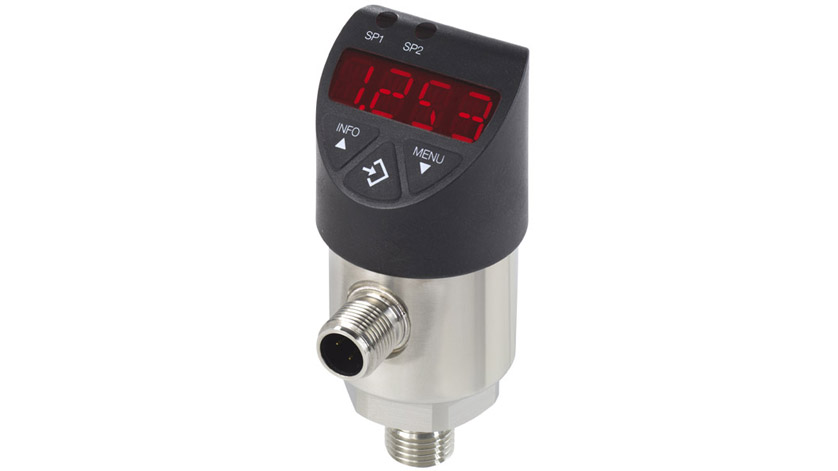
As soon as a preset pressure is reached, an electronic pressure switch opens or closes a corresponding switch contact. There are various designs of electronic pressure switches which are used in a multitude of industrial and technical processes. Particularly in machine building, electronic pressure switches are frequently used. The advantages of the electronic version of the pressure switch are a digital display, adjustable switch points and considerably higher reliability.
Construction of an electronic pressure switch
An electronic pressure switch is based on an electronic pressure sensor (often also referred to as a pressure transmitter) and therefore also provides its functionality. By virtue of the integrated electronic switches used to open or close the electric circuit, it performs simple control tasks. The switch point and reset point can be set individually and conveniently on the instrument.
Variants of electronic pressure switches
By default, a pressure switch only provides the binary signals such as switch point or reset point “reached” or “not reached”. However, it is not clear how far removed the measured pressure is from the switch point or reset point. That is why many pressure switches have a display and additionally an analogue output signal. On the display, one can read off the applied pressure or check the set parameters. Of course, the pressure value can also be transmitted via the analogue output signal to a control unit. This type of electronic pressure switch can be considered as a, so-to-speak, 3-in-1 instrument: an electronic switch, a pressure sensor (pressure transmitter) and a digital indicator combined within a single instrument.
Note
Further information on our range of electronic pressure switches can be found on the WIKA website.

